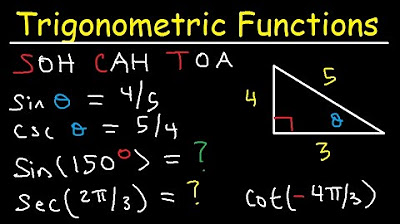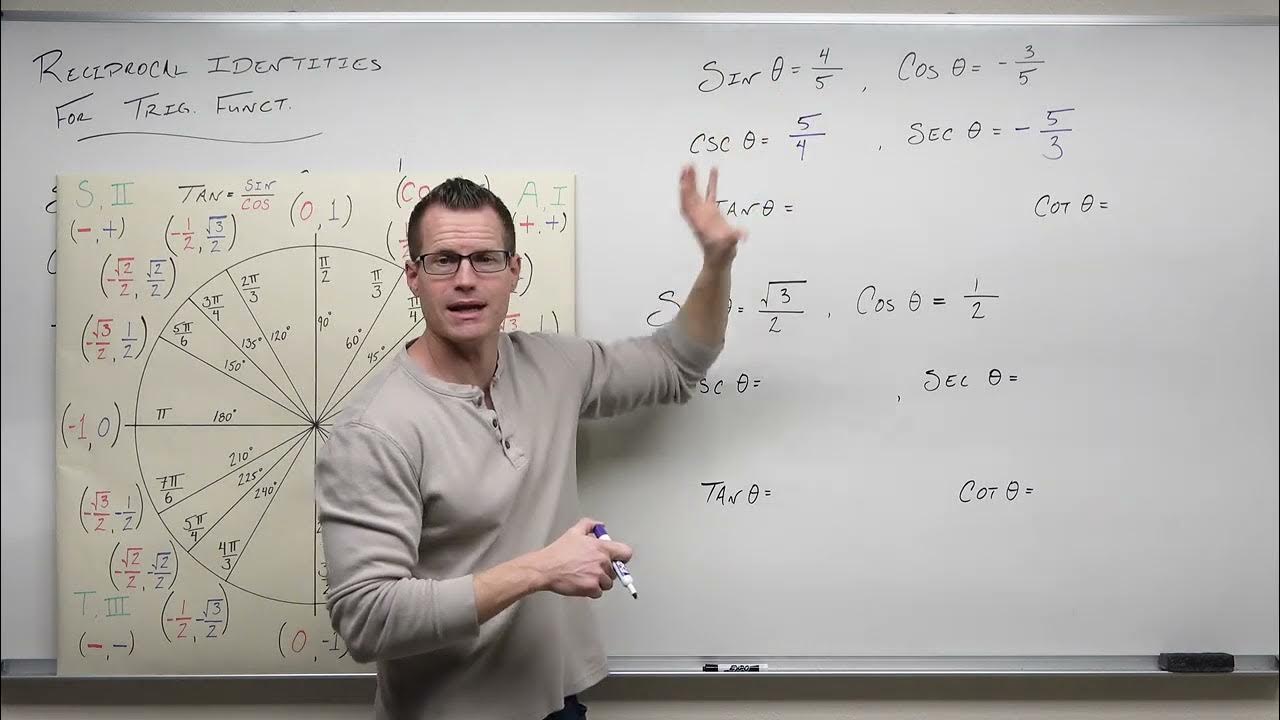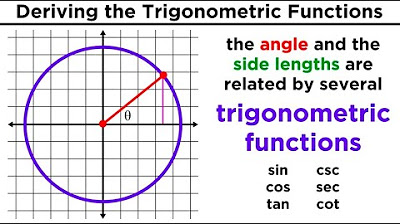The Easiest Way to Memorize the Trigonometric Unit Circle
TLDRThe video introduces the unit circle, explaining how to easily derive trigonometric function values for angles by relating them to the circle's x and y coordinates. It overviews special triangles to derive common values like sine and cosine of pi/6. It then shows how visualizing movements around the coordinate plane reveals patterns for trig values in each quadrant, replacing fractions with roots to find a sequence. Using this sequence and recognizing coordinate relationships allows quickly evaluating any trig function. Comprehension checks at the end test retaining this intuitive understanding.
Takeaways
- 😀 The unit circle is a circle with radius 1 centered at the origin of the coordinate plane.
- 😎 The unit circle contains angles that are multiples of π/6 and π/4.
- 🤓 Sine and cosine values correspond to the y and x coordinates on the unit circle.
- 🧐 Memorize the numeric sequence: root 0/2, root 1/2, root 2/2, root 3/2, root 4/2.
- 🥸 Use this sequence for both sine (y) and cosine (x) values in quadrant 1.
- 😮 Sine stays positive and cosine becomes negative in quadrant 2.
- 😲 Both sine and cosine become negative in quadrant 3.
- 🤯 Cosine becomes positive again and sine stays negative in quadrant 4.
- 👍 Visualize unit circle angles to quickly evaluate trig functions.
- 💪 With practice, you'll easily evaluate trig functions for any angle!
Q & A
What is the unit circle?
-The unit circle is a circle with a radius of 1 unit centered at the origin on the coordinate plane.
What do the X and Y coordinates on the unit circle represent?
-The X coordinate represents the cosine of the angle and the Y coordinate represents the sine of the angle.
Why is pi/6 an important angle on the unit circle?
-Pi/6, or 30 degrees, is important because it corresponds to the special 30-60-90 triangle, which makes its trig values easy to remember.
What pattern simplifies remembering unit circle values?
-Replacing the fractions with roots creates a numerical sequence that matches the Y values then X values going counterclockwise around the circle.
How can you find sine, cosine, etc. for any angle?
-Visualize the angle's location on the unit circle and use the coordinate at that point to find the function value, remembering sine = Y and cosine = X.
Why does the sine stay positive in quadrant 2?
-The sine corresponds to the Y coordinate, which remains positive above the X axis in quadrant 2.
Why do the cosines become negative in quadrant 2?
-The cosines correspond to X coordinates, which are negative to the left of the Y axis in quadrant 2.
How can you evaluate a trig function for a large angle?
-Break it into whole revolutions plus a remaining part less than 2pi. Evaluate the trig function for just the remaining part.
What is cosecant defined as on the unit circle?
-Cosecant is 1 over sine. So take the sine's Y value, flip it to find cosecant.
How can the unit circle help you memorize trig values?
-By visualizing the angles and coordinate locations, you can intuitively remember sines, cosines, tangents without calculating.
Outlines
🤓 Introducing the Unit Circle
Paragraph 1 introduces the unit circle, explaining that it is a circle with radius 1 centered at the origin on the coordinate plane. It notes that the unit circle contains multiples of pi/6 and pi/4 whose sine and cosine values must be memorized. The paragraph then reviews what sine and cosine represent in terms of triangle side lengths and how this applies to the unit circle by constructing triangles.
😃 Memorizing Unit Circle Values
Paragraph 2 returns the unit circle values to simplified forms and extends them into the other quadrants. It notes patterns in the sine and cosine values that can help memorize them. The paragraph then demonstrates how to quickly evaluate trig functions for any angle on the unit circle by visualizing and locating reference angles.
Mindmap
Keywords
💡Unit circle
💡Trigonometric functions
💡Coordinates
💡Quadrants
💡Special triangles
💡Reference angles
💡Numerical sequence
💡Trigonometric identities
💡Radians
💡Visualization
Highlights
First significant highlight text
Second notable highlight text
Third innovative method introduced
Fourth theoretical contribution highlighted
Fifth notable impact discussed
Transcripts
Browse More Related Video

Trigonometric Functions of Any Angle - Unit Circle, Radians, Degrees, Coterminal & Reference Angles

Reciprocal Identities in Trigonometry (Precalculus - Trigonometry 9)

Yr 10 Trigonometry 10 - The four quadrants

How to Remember the Unit Circle (NancyPi)

The Unit Circle, Basic Introduction, Trigonometry

Trigonometric Functions: Sine, Cosine, Tangent, Cosecant, Secant, and Cotangent
5.0 / 5 (0 votes)
Thanks for rating: